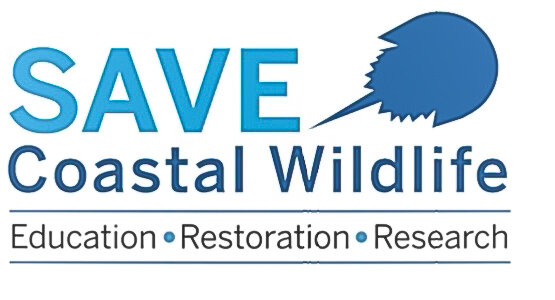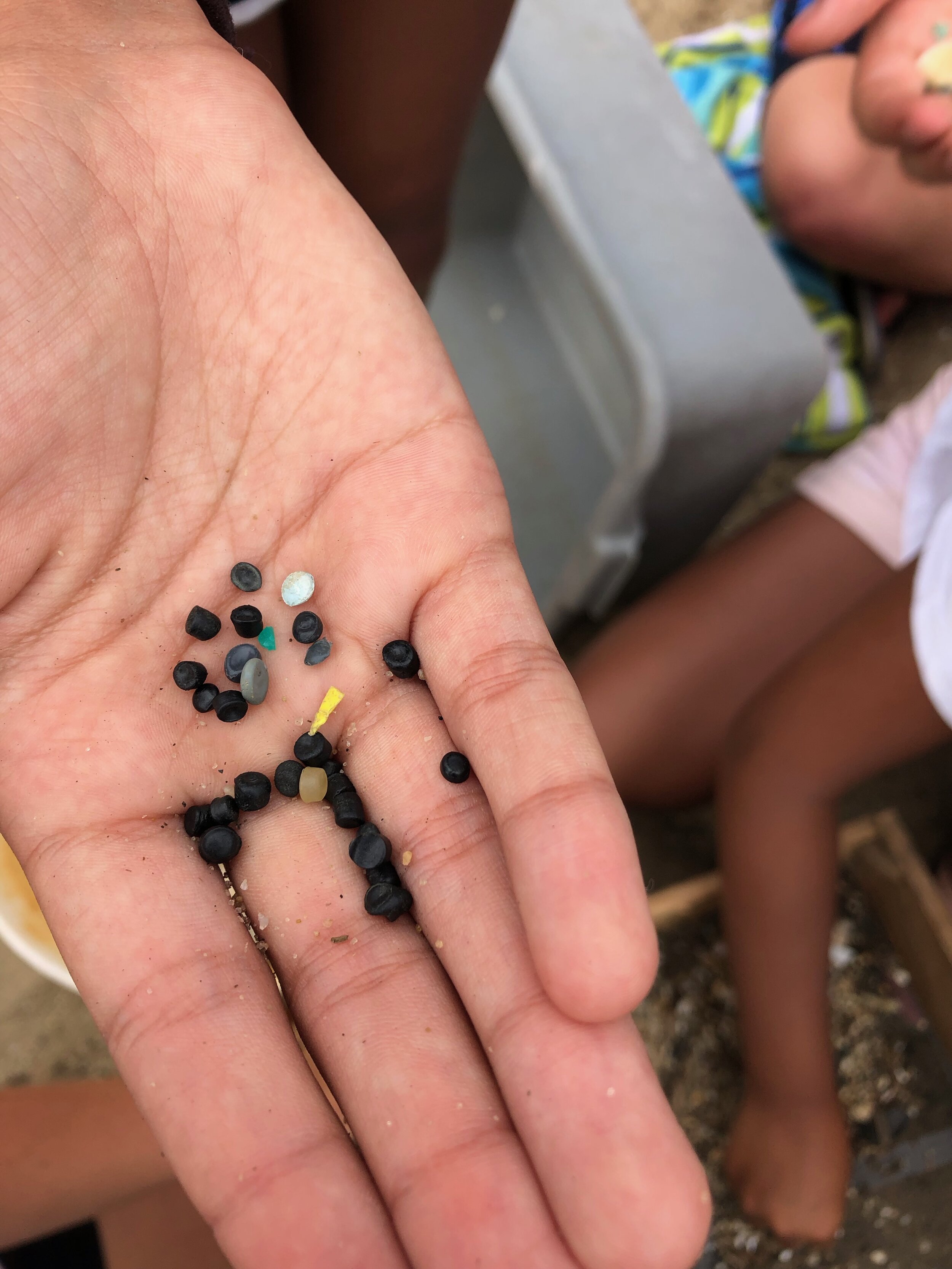VOLUNTEERS NEEDED TO CONDUCT MICRO-PLASTIC RESEARCH ALONG THE JERSEY SHORE.
Unfortunately, we all live in an ever-increasing plastic planet. In fact, we have been using ever more plastic products since the 1950s. Although plastic is beneficial for the medical industry and other occasions where safety and health is a priority, our society has gone to the extreme. Today just about everything we purchase is either made of plastic or contains some degree of plastic, or shipped in a plastic package. Look Around - plastic is everywhere!
Now tiny pieces of degraded plastic, synthetic fibers and plastic beads, collectively called microplastics, have turned up in every corner of the planet—including along the New Jersey Shore! Current research suggests that juvenile fish and shellfish are eating micro-plastics, many of them the same size, shape, and color as their favorite foods - plankton!
Plastic pieces can easily mimic food if you're a larval fish. Larval flying fish (top) and triggerfish (bottom) with ingested plastics zoomed in. Dime shown for scale. Image from Inverse
VOLUNTEERS NEEDED!
Join members from Save Coastal Wildlife, The Plastic Wave Project and Save Barnegat Bay as we embark on a citizen-science project to study microplastic concentrations on beaches along the Jersey Shore.
The goals of the study include:
1) to determine which beaches along the Jersey Shore have the highest concentrations or most abundance of micro-plastics;
2) to help educate people about the tiny plastic particles in our coastal waters and beaches that never biodegrade and are accidentally ingested by marine life.
This project is open to the general public as well as to middle school, high school and college students; teachers and other educators.
Help Conduct Microplastic Research Along The Jersey Shore To Discover How Extensive the Problem Is Along The Coast.
The sample seasons take place around the times of the winter and summer solstices and the spring and fall equinoxes. All you have to do is sample your favorite beach along the Jersey Shore just once during these four times throughout the year. Each sample season will last 2 weeks with the start date as the first day of each season. Pick one day within this two week period to take a sample.
We prefer you take samples during low tide. At your favorite beach, take 3 scoops of sand at three sample sites:
Sample Locations:
Dune Line - at the foot of the dune - right on the line where dune slope stops and any plants stop growing.
High Tide Line - during low tide this area should be marked with a wrack or debris line or discoloration.
Low Tide Line - point where water comes up on the shore during low tide.
Interested in Helping to Find Micro-plastics at Your Favorite Beach?
All interested volunteers should sign up here: https://forms.gle/joSNVwzPoyE2KLRK6
You can also access the sign-up sheet and more information here: https://www.plasticwaveproject.com/microplastics
All volunteers are also required to sign the volunteer waiver prior to the start of the project.
For the most up-to-date guidelines and information regarding the micro-plastic research project, please review The Plastic Wave Project website on microplastic research.
In order to be a volunteer, please watch one or (better yet!) both videos below to better understand how to monitor your favorite beach for micro-plastics and how to follow required protocols.
Join Save Coastal Wildlife and Plastic Wave Project conduct microplastic research along the Jersey shore. More information on this pilot study here: https://...
Microplastics make their way into our waterways from everyday items that we use. In partnership with Save Coastal Wildlife and The Plastic Wave Project, Save...
Important definitions to note:
Microplastics: For this study, microplastics will be considered any small plastic piece you see with your naked eye that winds up on the top of your sifter.
Scoop: Depending on your trowl / garden shovel size, each scoop will be a little different. A scoop should stay near the surface of the sand as we are not looking for how deep the microplastics are within the sand, just the location on the beach.
Meter Square: Outline of a 1 meter by 1 meter square used to designate a sample area. You can make one or use a meter stick / measuring tape. We suggest bringing somthing phyical to mark the corners of a squares off. Creating a square to pick up and carry is probably the most time effective way to sample - let us know what works for you!
At home, you may want to classify the micro-plastics you find into the following categories:
Filament - single or multiple twisted/woven fibres, often derived from clothing or fishing nets
Film - thin, flexible pieces of plastic, often transparent in colour, often derived from polythene bags or food packaging
Foam - usually white and spongy, originates from polystyrene packaging or disposable cups
Fragment - hard angular pieces of plastic formed from the degradation of larger plastic items
Nurdle or Pellet - the raw material from which plastic items are made, they have a distinctive cylindrical, disc- or lentil-like shape and are mostly white or transparent (although other colours are found)
Other - examples of other types of plastic can include spherical granules and other small moulded plastic pieces
In addition, measuring the weight and abundance of microplastics by type, size and colour can enable you to establish which types of microplastic pollution are most common at your survey site. If you undertake sampling at more than one site you can compare the level of microplastic pollution across your sampling sites and assess the variability in microplastic deposition across a wider beach or area.
What are Microplastics?
Microplastics are small plastic pieces
Microplastics are less than five millimeters in length (or about the size of a sesame seed). Microplastics come from a variety of sources, including from larger plastic debris that degrades into smaller and smaller pieces. These tiny particles easily pass through water filtration systems and end up in the bay and ocean, posing a potential threat to aquatic life.
Don’t Forget Nurdles!
Nurdles are small plastic pellets about the size of a lentil.
Countless nurdles are used each year to make nearly all our plastic products, including fleece jackets and vests, but many end up washing up onto our coast. Spills from tanker ships and mishandling by industry can mean nurdles end up in our estuaries and oceans.
Unlike large pieces of plastic, nurdles are so small that they largely go unnoticed by the public. They can easily blend in with beach sand. They often appear as tiny pebbles or grains of sand. Scientists are now becoming increasingly concerned about their effect on human health and our coastal ecosystem.
Please watch the following videos below to better understand micro-plastics and the volunteer monitoring process.
Micro-plastic beach monitoring at Plum Island, Sandy Hook National Recreation Area, New Jersey.











